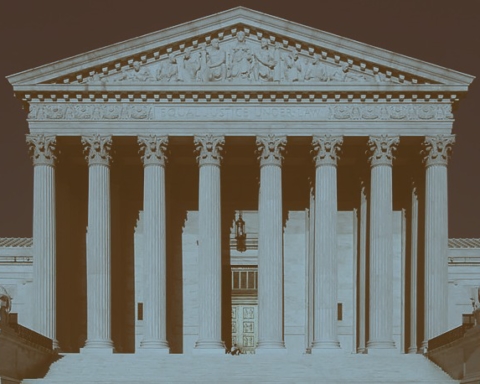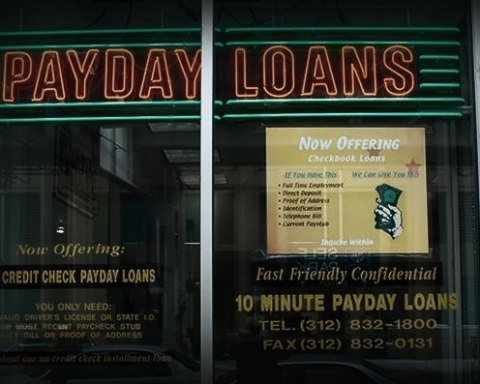A former White House communications director claimed that a key shift in the Obama administration’s approach to labor policy occurred just months after the Occupy Wall Street movement started.
Dan Pfeiffer said in an article published Monday morning that a December 2011 presidential speech in Kansas can be seen as a watershed moment in the Obama era.
“Perhaps the most substantively important speech of the Obama presidency was the Osawatomie speech in 2011,” Pfeiffer said, in a Times trend piece detailing a recent rash of pro-union decisions by administration appointees. “It was a set of marching orders to the entire government that increasing income inequality and declining economic mobility are the key challenge of our time.”
Whatever the impact of the regulations listed by The Times will be, the remark sheds some light on the effect of Occupy Wall Street–a now-defunct movement that has long been derided by many as aimless.
The discourse has shaped how the most prominent ongoing progressive political movement in the US has been critiqued. In an Aug. 24 op-ed urging Black Lives Matter organizers to embrace structure, for example, US News & World Report editor Joseph Williams said Occupy’s “failure to define its purpose, clearly articulate its goals, find common ground with establishment groups or even agree on its structure all but condemned [it] to political irrelevance.”
President Obama’s Osawatomie speech, however, and Pfeiffer’s assessment suggest the movement had immediate consequences. In the oration, Obama referenced “the people who’ve been occupying the streets of New York and other cities” and used OWS-style “99 percent” rhetoric in a broadside that included attacks on deregulation and “busting unions.”
“Look at the statistics,” the President said. “In the last few decades, the average income of the top 1 percent has gone up by more than 250 percent to $1.2 million per year. I’m not talking about millionaires, people who have a million dollars. I’m saying people who make a million dollars every single year.”
Obama appointees in recent months issued rules that could go some way toward ensuring that this wage growth is more evenly spread among those who helped create it in the first place.
The Labor Department in late June expanded the number of employees eligible for overtime pay—a move that could boost the earnings of 5 million Americans, the administration claimed.
This month, the National Labor Relations Board removed an exemption from basic labor law for home caregivers and issued a ruling that will make it easier for employees of franchises like McDonald’s to collectively bargain with their corporate parents.
Throughout his presidency, Obama has been hammered by progressives for not doing more to directly address wage stagnation experienced by millions of Americans and the widening rift between rich and poor that has continued apace on his watch.
While labor unions were on the president’s side in the battles to pass healthcare and financial reform in 2009 and 2010, he was attacked by them for not spending significant political capital in that time to advance the Employee Free Choice Act.
The legislation would allow organizers and workers to unilaterally form unions if a simple majority of employees sign cards backing the move. Currently, bosses can refuse to recognize the establishment of collective bargaining units if organizers don’t vote to form them through secret ballots. The process opens up workers to intimidation and captive audience meetings, and grants anti-union bosses the opportunities to woo workers to their side with sweetheart deals.
In December 2014, the NLRB went someway toward addressing the power imbalance in this dynamic by shortening the number of days that must pass between the submission of signed cards and certification votes. Republicans complained that the rule would cut this waiting period down to 11 days from a median of 38 days. The regulation took effect in April.
Left-leaning critics of the Obama administration, however, would quibble with the idea that the preponderance of White House efforts since Osawatomie are pro-labor, even if all sitting NLRB members were appointed in 2013.
The President has prominently fought unions tooth-and-nail on his trade agenda. The Trans-Pacific Partnership, for example, which has been championed by the White House for years, will set new ceilings on regulations. If approved by Congress, the TPP will also make it easier for corporations to import commodities made in Vietnam and Malaysia–significant labor markets noted for their low wages and abusive managers. Secretary of State John Kerry said earlier this month that he expects the deal to be completed by the end of 2015.
Ross Eisenbrey, an Economic Policy Institute researcher who helped craft the overtime rule, also told The Times that Department of Labor enforcement independent of regulatory framework will remain lax “as long as the budget deal the administration negotiated continues to restrict discretionary spending.”
There is also a question of how much Occupy Wall Street itself directly influenced the Obama administration from the left if, in fact, the White House did decide to take a more pro-labor approach in Dec. 2011.
The months before the Osawatamie speech saw Americans taking part in strike actions like they hadn’t done in four years. In August, 40,000 Verizon workers organized by the Communications Workers of America and the International Brotherhood of Electrical Workers walked out on the job for two weeks. In September, 41,200 workers in a variety of industries were involved in what the Bureau of Labor Statistics calls “major work stoppages”–strikes involving more than 1,000 workers. Occupy started on Sept. 17, 2011.
Before August 2011, the last month that the number of workers involved in major work stoppages had exceeded 40,000 was October 2007. The average number of workers participating in such actions in any given month between those two was about 5,900.






